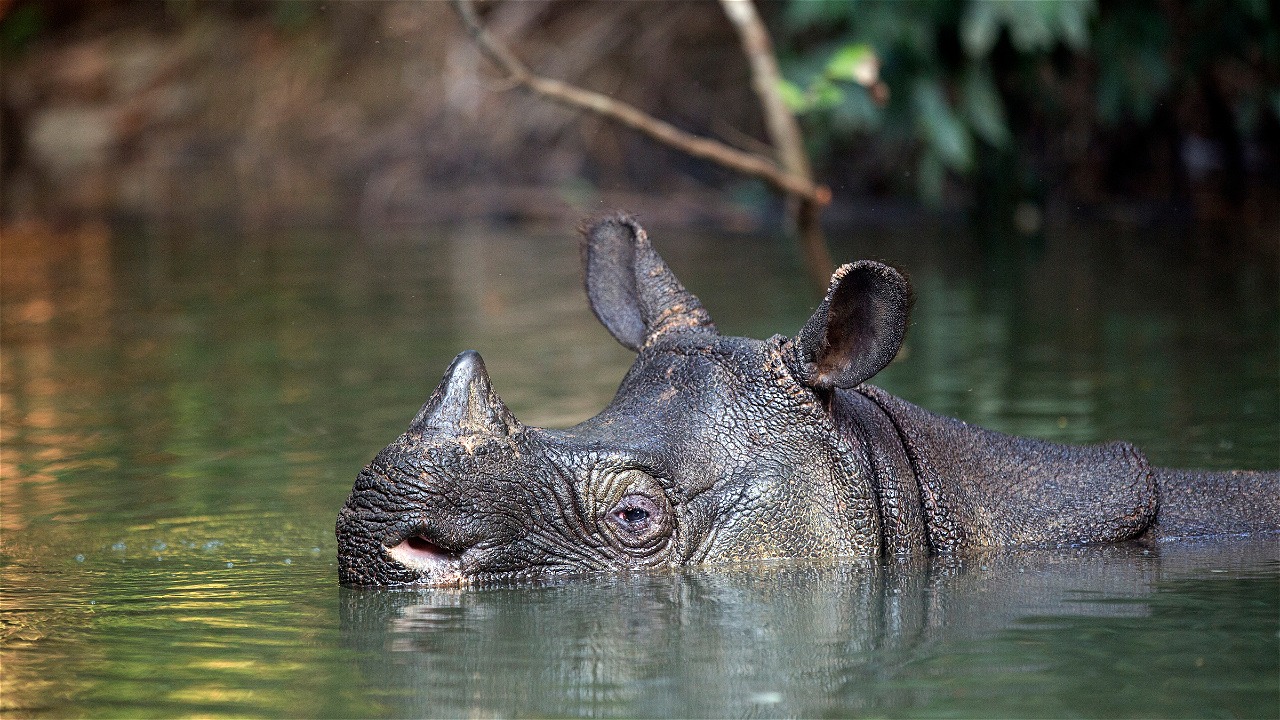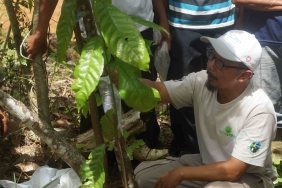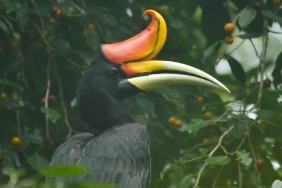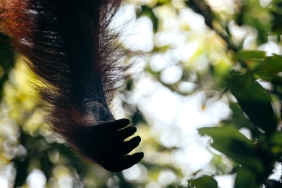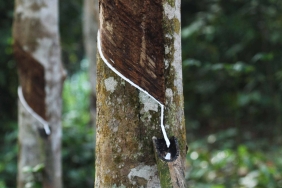EFFORTS TO KEEP RHINOS FROM EXTINCTION
By: Natalia Trita Agnika
Today, September 22, is World Rhino Day. On this day, we are reminded that there are currently five rhino species left in the world, two of which are found in Indonesia, namely the Javan rhino (Rhinoceros sondaicus) and the Sumatran rhino (Dicerorhinus sumatrensis).
Rhinos are solitary animals that are very difficult to observe. For example, members of the Rhino Monitoring Unit of Ujung Kulon National Park (TNUK) who often go in and out of the forest to monitor the presence of Javan rhinos in the TNUK area almost never meet directly with these rare animals. The presence of these one-horned rhinos can be monitored thanks to camera traps (camera trap) installed in locations that are favorite places for rhinos, such as feeding and wallowing places.
The efforts and cooperation of various parties - including public support - have yielded positive results. One of them is the good news about the birth of rhinos in TNUK. During 2015, there were seven Javan rhino births recorded by camera traps. That way, there are an estimated 64 Javan rhinos in Ujung Kulon National Park, as revealed by the Minister of Environment and Forestry, Siti Nurbaya, in her speech at the Environment Week, in Jakarta, Thursday (8/6/16). Of course this is encouraging, especially since rhinos are animals that are difficult to reproduce. The rhino's pregnancy period is relatively long, and it can only reproduce two or three times in its lifetime. On the other hand, the shy nature of female rhinos makes the intensity of meeting male and female rhinos very minimal. In addition, female rhinos are usually reluctant to be approached by male rhinos as long as their cubs have not been released by the female rhino.
However, this species, which has mosaic skin resembling steel, is still under threat. Currently, Javan rhinos in TNUK are threatened by the presence of langkap (Arenga obtusifolia) plants that thrive in the forest. The langkap blocks sunlight so that rhino food plants cannot grow. In response, WWF-Indonesia developed a project to control the growth of langkap.
In addition to the decline in habitat quality due to the presence of traps, the phenomenon of climate change, especially rising sea levels, is also a threat to Javan rhino habitat on the Ujung Kulon peninsula. From field observations, especially in the neck of the Ujung Kulon peninsula, there has been a significant shrinkage of land. The relatively small width of land on the neck of the peninsula, less than 2 km, is threatened to be lost due to abrasion along with rising sea levels. "If no adaptation measures are taken to the impact of global climate change phenomena, then the peninsula area has the potential to be separated from the mainland of Java Island which will then become a separate island and isolate the Javan rhino population in the end," said Yuyun Kurniawan, WWF-Indonesia's National Rhino Conservation Coordinator.
The Javan rhino population that only exists in the TNUK area also has its own problems. "Rhinos that are in one population will be at risk of extinction due to disease or natural disasters. Therefore, it is necessary to build new hopes outside the Ujung Kulon peninsula," explained the Head of TNUK, M. Haryono during a media visit in November 2015. This second habitat is also to avoid inbreeding which will result in declining genetic quality and species becoming susceptible to disease. It is hoped that not only the development of the second habitat, but can be continued to the third, fourth, and so on to avoid the extinction of Javan rhinos, especially due to disease outbreaks and natural disasters.
Similar to the fate of Javan rhinos, Sumatran rhinos also need rescue efforts. Although in terms of numbers, the Sumatran rhino's global population is larger than that of the Javan rhino, its dispersed existence in small sub-populations has resulted in lower population growth opportunities for the Sumatran rhino relative to the Javan rhino. Land fires, plantation expansion, illegal logging and poaching are the main issues for rhino conservation in Sumatra. Of the nine Sumatran rhino population pockets in Sumatra and Kalimantan, only four remain. Recent studies have shown that local extinction has occurred, such as in Kerinci Seblat National Park, where the two-horned rhino has not been found since 2008.
Although humans rarely see them, rhinos are animals that have important services to maintain forest quality. Through their diet as browsers (eaters of shrubs and leafy tops), rhinos help reduce global warming. Yes, that's because new leaf shoots that grow will absorb more carbon dioxide than old leaf shoots.
The Javan rhino and Sumatran rhino are protected endangered species that are currently Critically Endangered. It is our duty together to help protect them so that these species of Indonesian pride do not become extinct and remain a story. Let's join the rhino rescue and conservation efforts through wwf.id/natureguardian.

